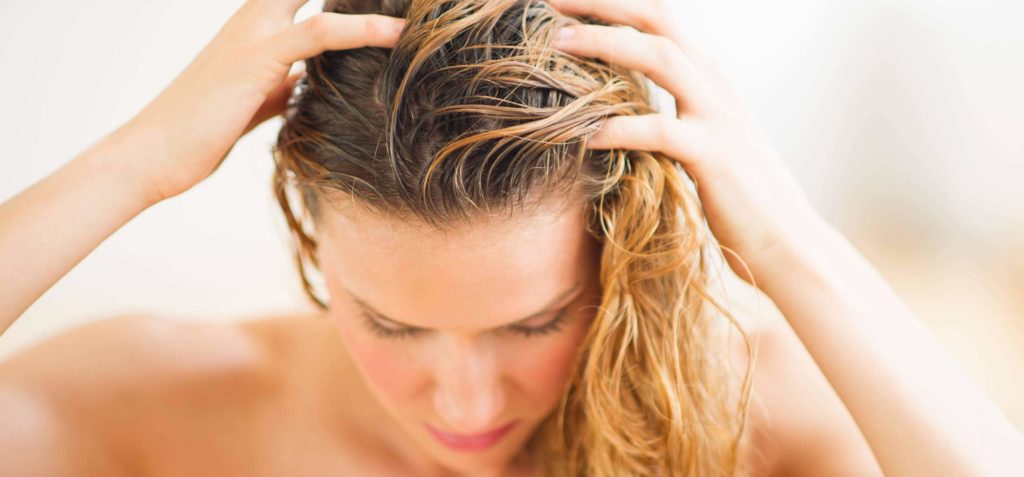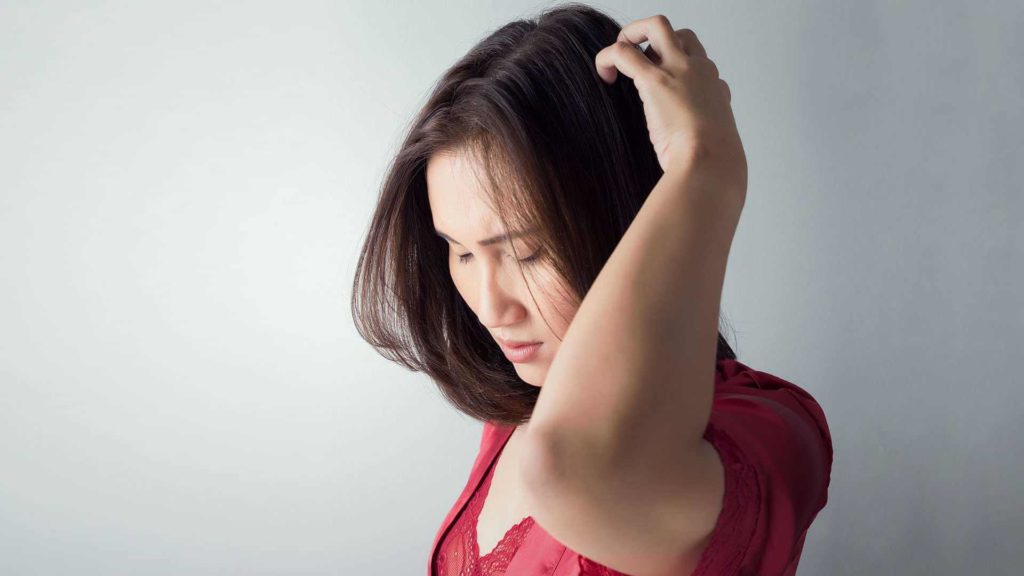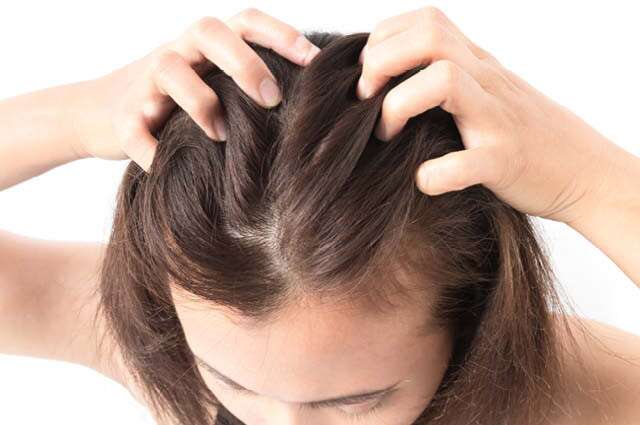
Here’s how to get more beauty routines, suggestions, and features by subscribing to Allure’s print version.
My boyfriend and I just watched an episode of TLC’s too-gross-to-turn-away sequence, Dr. Pimple Popper, on a lazy weekend in upstate New York. Was I ready to see dermatologists Sandra Lee pop two giant cysts on a patient’s head? I have a pretty high tolerance for blood and gore, but was I ready to see dermatologists Sandra Lee pop two giant cysts on a patient’s head? I wasn’t, and gnocchi will never be the same to me again. On the other hand, pimples on the scalp aren’t just a TV phenomenon; they’re a common condition that affects much more people than you would expect.
According to Carlos A. Charles, a board-certified dermatologist in New York City, “scalp acne refers to pimples spread across the scalp, while folliculitis refers to infections and inflammation around the hair follicles.” “It’s more popular in people who already have facial acne,” says the specialist.
So, before you freak out, let me tell you that I spoke to a couple more dermatologists and trichologists to find out why scalp acne happens in the first place — and how to stop it in the future.
What is the concept of scalp acne?
We’ve all seen pimples, but picture them along your hairline or even underneath your hair. Yes, that is acne on the scalp. Scalp acne, according to Deanne Mraz Robinson, a board-certified dermatologist in Westport, Connecticut, is a form of folliculitis, or inflammation of the hair follicles, which can be caused by irritation bacteria, fungal, or other infections. “If you have facial acne, you can also get typical acne along your hairline.”
Penny James, a salon owner, and trichologist clarifies that these aren’t the same as seborrheic dermatitis (which is caused by an overactive serum on the scalp mixed with inflamed skin, resulting in large flakes of skin) or pilar cysts (which are filled with keratin from the hair follicle and relatively harmless). However, be cautious about self-diagnosing “scalp acne” since it may have various causes and sometimes be anything more severe than a standard breakout.
If you’re concerned that your dandruff is triggering your pimples, Charles says there isn’t a direct connection between the two. “Those with dandruff, on the other hand, appear to have an excess of oil and sebaceous activity in the scalp,” he says. “They may also be more susceptible to breakouts of acne.”
How do you deal with scalp blemishes?
Acne on the scalp can be caused by various causes, including stress, hormonal imbalances, certain foods, and abnormal immune responses, much like acne on the face. Oil-based products, such as heavy pomades, can clog pores and glands, making it even more essential to wash (and style) your hair with the right products.
According to Shari Hicks-Graham, a board-certified dermatologist in Columbus, Ohio, people with oilier hair textures (or scalps) are more likely to develop scalp acne.
pimples “because the extra sebaceous gland activity that produces the oil also supports an atmosphere that promotes bacterial growth — particularly propionibacterium acnes — and other types of bacteria like staph and strep.”
What do you stop doing if you encounter a breakout?

Squeezing, picking, or popping a pimple on the scalp (or anywhere else) can only be done in a medical setting, where “techniques and products to avoid chronic trauma or infection of the skin” are used, according to Hicks-Graham. “In many instances, the strain from these actions causes the pimple’s infection and inflammation to spread deeper into the skin and become more buried, prolonging the lesion’s path.”
In the end, this will result in more skin scarring and hair loss. What is the moral of the story? Remove your hands from the situation.
What would you do to get rid of acne on your scalp?
Lather up with medicated shampoos formulated with antibacterial ingredients, including sulfur and salicylic acid, to make your wash-day routine count. “I recommend washing every other day,” Robinson recommends. “For best performance, lather up and keep the anti-inflammatory shampoo on for five minutes before rinsing.” Can shampoo, which mixes salicylic acid and dilutes sodium hypochlorite to treat itching, folliculitis, and dandruff, is recommended.
Topical options such as topical clindamycin, erythromycin, benzoyl peroxide, salicylic acid, or glycolic acid can be recommended by your dermatologist. “Oral antibiotics or oral retinoids are recommended for more serious cases,” Hicks-Graham says.
What would you do to avoid getting acne on your scalp?
Given the shortage of details on scalp acne on the Internet, Carlos says that the condition isn’t unusual and regularly sees patients. “Assisting in the prevention of oil and flaky build-up can be highly beneficial,” he says. “Ketoconazole shampoo (available over the counter at 1% strength or by prescription at 2% strength) and ketoconazole cream (available over the counter at 1% strength) are two good alternatives.”
Neutrogena T/ Sal Therapeutic Shampoo, which also includes salicylic acid to minimize bumps, is another favorite of his.
On the other hand, he advises that while these shampoos can help with an oily scalp, they can also dry out your hair if you use them too much. “If acne bumps appear, look for items that contain glycolic acid or even tea tree oil, which you can apply directly to the infected areas. This will help to get rid of bacteria and speed up the process of getting rid of the pimple.”
Finally, if lesions linger after trying these home remedies, Carlos advises, “it’s a good idea to see a dermatologist for a comprehensive examination.”
Preventative measures:
To prevent clogged pores, it’s essential to keep your scalp clean. Washing your hair begins to feel sticky, and after every exercise is a good rule of thumb
Try the following to treat scalp acne and avoid further flare-ups:
- allowing the scalp to breathe by wearing looser-fitting headgear
- Hair should be washed soon after exercise.
- Switching to hypoallergenic, alternative hair care products A wide variety of items are available for purchase on the internet.
- Using too many hair items, such as hairsprays and gels, is not recommended.
- To keep the skin safe, make sure you get enough vitamin A, D, and E. Multivitamin supplements can be found in health food stores and the internet.
- If the diet is suspected as a cause of flare-ups, keep a food diary to see if any foods cause flare-ups.
Infrequent hair washing can lead to scalp acne in some people. For some, excessive hair washing may deplete the skin’s protective sebum, increasing the risk of other pollutants getting through. Consult a dermatologist to determine the correct hair care regimen.
Acne on the scalp is less common than on other parts of the body, but it can be just as bothersome.
Pimples on the scalp, also known as scalp acne, are often caused by clogged pores. The condition can be treated by keeping the hair clean and using medicated shampoos.
We’ll look at how to recognize scalp acne, its causes, and how to handle and avoid it in this post.
Medications:
A medicated shampoo or scalp cream will almost always be recommended by a doctor. These shampoos can remove excess oil and debris from the scalp, preventing the recurrence of scalp acne.
Without a prescription, medicated shampoos for scalp acne can be purchased online. These goods commonly contain the following ingredients:
- Tea tree oil is an essential oil that can aid in the removal of bacteria from the scalp.
- Salicylic acid is a material that assists in the removal of dead skin cells.
- Exfoliating the scalp with glycolic acid will help remove dead skin cells, bacteria, and sebum.
- Ketoconazole is an antifungal drug that can benefit people with scaly or red skin.
- Ciclopirox is an antifungal that is commonly used in dandruff shampoos and is used to treat skin infections.
- Benzoyl peroxide, which helps eradicate the bacteria Propionibacterium acnes, can cause severe scalp acne.
A doctor can recommend the following treatments for persistent scalp acne and associated symptoms such as hair loss and inflammation:
- Antibiotic ointments or steroid creams for the skin
- injections of steroid
- antibiotics are taken by mouth
- Antihistamines are used to treat allergic reactions.
- Phototherapy, also known as light therapy, is a form of treatment that involves light.
- Isotretinoin, for example, is a particular treatment for extreme acne.
Unless otherwise ordered by a doctor, a person with scalp acne can only use one form of scalp treatment at a time. Individual product efficacy can be tracked more quickly this way.
Also read: Aida Bicaj
What causes acne on the scalp?
Small pimples or zits on the scalp, including the head’s back, are symptoms of scalp acne. Itchy and painful pimples are regular.
Pimples on the scalp grow when a pore or hair follicle becomes clogged with dead skin cells or sebum, the natural oil that the skin creates to keep itself moisturized.
Bacteria, yeast, or mites may also enter the pores and cause an allergic reaction.
Acne on the scalp can be caused by a variety of factors, including:
- clogged follicles of dead skin cells or oil
- a buildup of hair products like gels, leave-in treatments, and hairspray
- hair that hasn’t been washed thoroughly enough
- Waiting too long to wash your hair after a workout is a bad idea.
- sweating while wearing a hat, especially if it causes friction
The following terms are known to cause severe scalp acne:
- Malassezia yeasts are yeasts that belong to the Malassezia genus.
- Cut bacterium is a bacterium that lives in soil.
- Epidermidisa of Staphylococcus
- Propionibacterium acnes is a bacteria that causes acne.
- Staphylococcus aureus is a type of bacteria.
- Demodex folliculorum is a type of Démodé.
Acne can also be caused by a poor diet. According to a study published in Advances in Dermatology and Allergology, a high-sugar diet can increase acne’s risk.
Types of scalp blemishes:

There are various explanations why pimples or blackheads occur on the scalp, which may make diagnosing scalp acne more difficult.
Scalp folliculitis is a similar disease in which bacteria on the scalp invade and inflame the hair follicles. Tiny, itchy red bumps can develop as a result of this.
Seborrheic dermatitis Dandruff is a common symptom of seborrheic dermatitis, which causes the scalp to turn red and scaly. Picking at the area will cause more damage and leave marks that resemble pimples.
Pillar cysts are keratin-filled hard bumps that grow near the hair root. These bumps, unlike scalp acne, rarely have a white head.
Bumps on the scalp may also be an indicator of cancerous cells, such as squamous cell carcinoma.
Perspectives:
Acne on the scalp is pretty standard, and it’s handled similarly to acne on other parts of the body.
Acne on the scalp may also be a symptom of something more severe. When acne does not respond to standard treatments, a person may consult a doctor to determine the best action course.
A dermatologist will often begin treating scalp acne with daily medicated shampoos. If this does not work, they will suggest a more aggressive treatment.
It can take some time for acne scars to disappear. To avoid spreading bacteria or developing deep scar tissue, avoid picking pimples on the scalp.
In some instances, taking preventive steps will prevent scalp acne from returning.
How long does it take for pimples to heal?
Acne treatments can take anywhere from four to eight weeks to start working. To prevent recurrences, you may need to continue treating the region. If you need to wash your hair regularly, dermatologists recommend using a mild, daily shampoo. This can be used in conjunction with a quick-drying conditioner. Gentle shampoos have been shown in studies to have little effect on natural hair development.
It can take up to six months for pimple scars to disappear. It’s vital not to pick at acne because this can lead to scarring. It’s also possible that the bacteria will spread.
Be gentle when massaging your scalp while you continue to treat your acne. Scrubbing with your fingernails is not recommended because it can irritate the skin and cause open wounds.
Prevention advice:
Acne may be avoided by identifying the cause (such as clogged pores) and making lifestyle changes. You’ll also want to search for items that won’t dry out your scalp or cause unnecessary buildup. Waxes, hair sprays, clays, and other hair products free of any chemicals and additives fall under this group.
Visit acne.org for a list of comedogenic ingredients. Comedogenic ingredients have a reputation for clogging pores, particularly in those with sensitive skin. Sulfates and Laureth-4 are two popular comedogenic ingredients used in shampoos and conditioners.
Reduced scalp irritation can aid in the reduction of scalp acne.
Remember to wash your hair after working out, wearing headgear, or engaging in other potentially sweat-inducing behaviors. Keeping your sleeping area clean, including changing your pillowcases and removing makeup (to avoid acne along your hairline), can also aid.
Diet and acne on the scalp:
According to Trusted Source, what you eat will influence oil production, inflammation, and acne. The American Academy of Dermatology warns against depending exclusively on a diet for treatment.
Limit carbohydrate-rich foods and increase foods with: for an anti-acne diet.
- Vitamin A is a potent antioxidant.
- D-vitamin
- fatty acids omega-3
- the fiber in the diet
- Antioxidants are beneficial to the body.
- zinc is a mineral that is contained in
If you experience a flare-up after consuming a specific item, you may want to cut it out of your diet. Keep a food log to keep track of what you eat and when you have flare-ups.
Don’t Pick:
If you have to touch a pimple on your forehead, try to stop picking and scratching it. Popping or grinding the spot will cause bacteria to enter, slowing the healing process and aggravating it further.
You will get a rash that looks like pimples even though you have dandruff. Even though they aren’t actually acne, they can cause a lot of scratching. “If you pick at them, as everybody does,” Dr. Schultz says, “they get even crustier.” Basically, the same maxim applies to this rash as it does to pimples: keep your hands off!
Instead, if the pimple is really itchy, gently push on it. Applying pressure to the spot will help relieve itching while also preventing the abscess from becoming inflamed.
Exfoliate regularly:
Once a week, use an exfoliating scalp cream to eliminate any excess dry skin on your scalp. By applying a drop to your shampoo, you can handle acne the same way you would on your face—but a little goes a long way here. Excessive oil can aggravate acne—more on that later.
Exfoliating can help eliminate excess oil and dry skin, but chemical exfoliants (such as salicylic or glycolic acid) are preferable to physical exfoliants. “The issue on the scalp is already discomfort,” Schultz says, “and I’m afraid that a physical exfoliator will aggravate it even further.”
If you must use a physical exfoliant, choose gentle and just use it when your scalp is not inflamed.
Avoid Adding Oils:
Avoid using hair products that are too thick or greasy, as they can leave a film on your hair. Keep deep conditioning masks and hair restoration procedures away from the scalp. Instead, use them to treat damaged ends, as they can add too much oil to the roots; the same can be said with your regular conditioner.
The majority of people with acne or extreme dandruff have an excessive amount of oil on their scalp. Fats are great for moisturizing your hair, but they can also cause buildup on your scalp and worsen your acne. “You don’t want to put oil on acne; you don’t want to add fuel to the flames,” Schultz says.
You Shouldn’t Be Afraid to Use Acne Treatments:
Mild scalp acne can be treated with almost any over-the-counter acne product, but products containing benzoyl peroxide should be avoided because they can cause hair bleaching or discoloration. For minor spots on your scalp, a mild moisturizer containing salicylic acid is a good choice, and it won’t bleach your hair. However, if your acne persists or becomes very serious, consult a dermatologist about an oral or topical drug that might be more effective for you.

